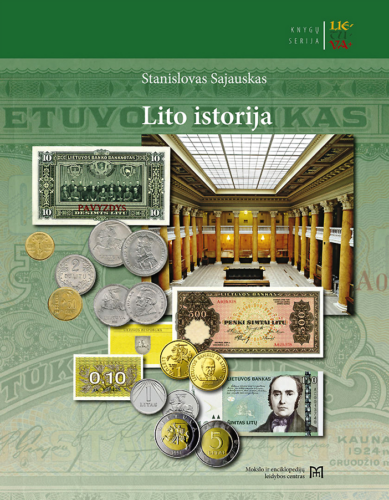Name:
Lithuanian Numismatic Catalog "History of the Litas"
Dimmensions:
250 x 50 x 300 mm.
Country of origin:
Lithuania
The litas, whose history is directly related to the two periods of Lithuania's independence, covering the years 1922–1940 and 1992–2015, and its name - with the name of Lithuania, remains in the minds of its citizens as the national and most stable currency.
After the annexation of Lithuania in 1940. June 15 The existence of the independent state of Lithuania and the circulation of Lithuanian money were terminated in 1941, and the Bank of Lithuania was transformed into the Republican Office of the State Bank of the USSR. March 25 The circulation of litas was banned, it was withdrawn from monetary circulation and the ruble was introduced. Litas banknotes were burned, a large part was taken to Moscow, and 15 million. Litas in 1941 was kidnapped by the Germans. The first stage of the litas' life is over.
The restored independence aroused hope for the revival of the national currency and provided an excellent opportunity to update interpretations of national identity in the creation of banknotes. The process of creating the litas was long. Neither the organizers of the competition nor the artists had any experience in creating currency in Lithuania.
The appearance of the litas was created long and consistently. The work of the group of artists lasted about a year. After the competition, artists had the task of choosing what to depict on the banknotes. The proposals show that they saw the restored litas as a continuation of interwar banknotes. The banknotes were often adorned with intricate ornaments and fonts and were rich in folk fabrics, ribbon ornaments, wooden spins, and window decoration fragments. There were also proposals to depict portraits of Lithuanian dukes - not real ones, but entrenched in traditional iconography.
In the consciousness of every Lithuanian, the litas evokes warm feelings and awakens nostalgia. On the other hand, the introduction of the euro shows the state's determination to take the path of Western Europe without looking back, even more so without looking back. From now on, Lithuanian euro coins marked with the national coat of arms - Vytis and the Lithuanian name of the state Lithuania - spread the good news about our country not only to Western Europe but also to the whole world. The story told here is just a book, reminiscent in words and images of the significant path of the Lithuanian litas to the current euro, its role in the history of our state, economy, and public consciousness.
Author: Stanislovas Sajauskas





